Magnolia Plantation is one of South Carolina’s premier attractions. Located on the Ashley River near Charleston, it bills itself as America’s last large-scale Romantic-style garden.
It fits the definition. It is a garden where form, balance and symmetry are thrown to the wind, where views are calculated to appeal to emotion rather than reason and where paths wander around dark reflecting waters that hide the realities underneath.
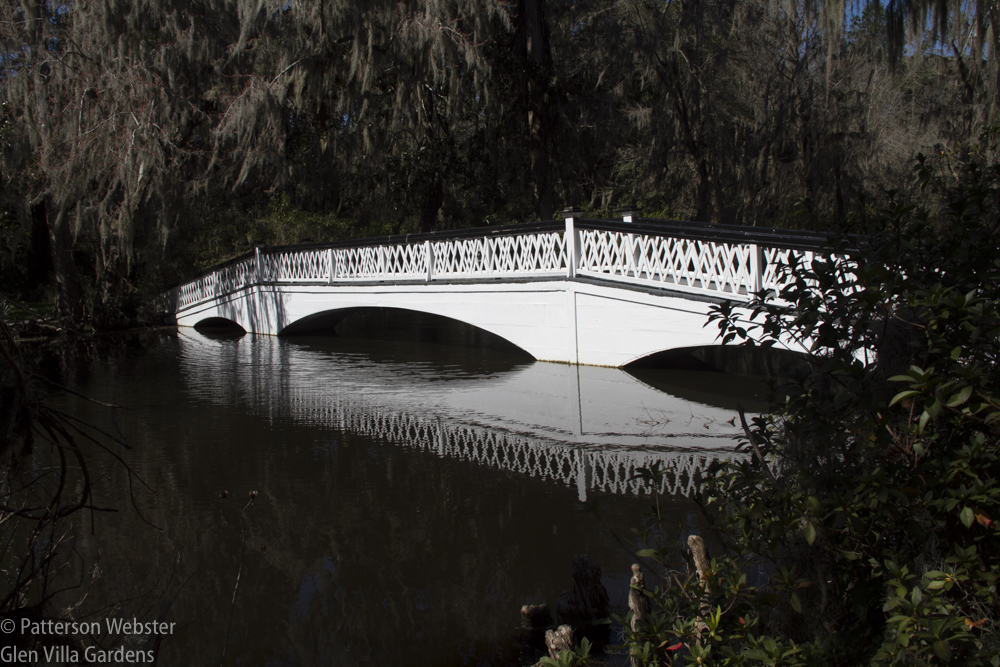
Reflected in the dark water, the Long White Bridge is the height of southern romance. It’s hard to resist its appeal.
As its name and location suggest, Magnolia Plantation is a deeply southern garden. At this time of year it is bursting with camellias and azaleas; magnolia trees are in bloom and live oaks are dripping with Spanish moss (Tillandsia usneoides).
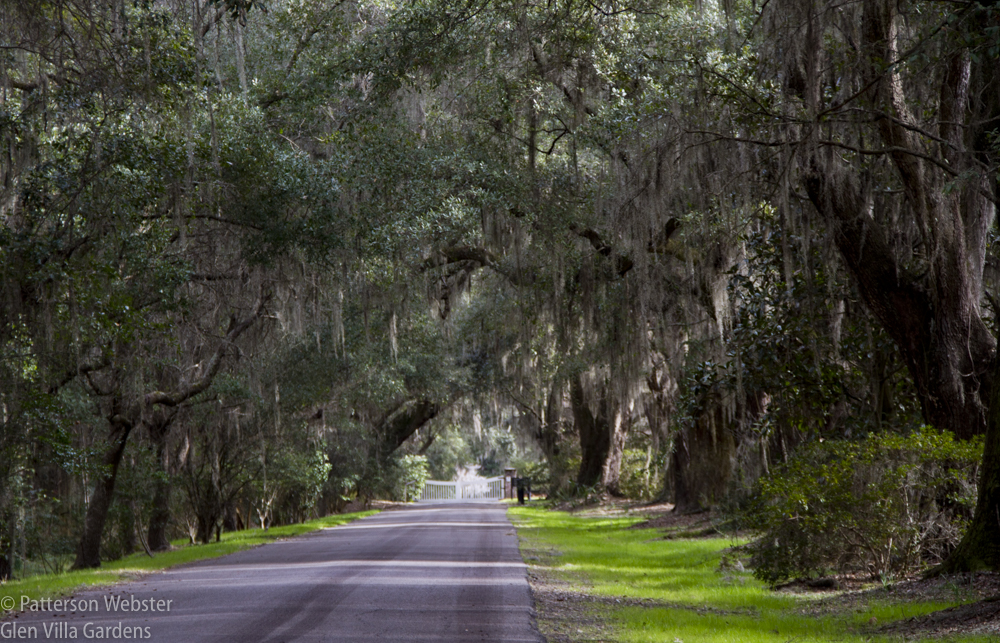
The entrance avenue of live oak, planted some 200 years ago, sets the tone for all that follows.
One small section of the garden dates back to the late 1600s but most of the garden was developed in the early to mid-19th century, in the years before the American Civil War. The war wrecked havoc on the garden, the plantation and the family in whose hands it still belongs, so in the 1870s the family opened the garden to the public as a money-making venture. While the gardens have evolved since their antebellum days, the layout — and more significantly their overall character — remains much as it has always been.
Is it the unchanging nature of the garden that explains why some people love it and others find it a disappointment?
I’ve visited Magnolia Plantation three times, twice this year and once last year. This doesn’t make me an expert — I’m sure many who live in the area visit the garden annually — but it does allow me to evaluate my own response. When I visited the garden for the first time, I expected to dislike it. I thought I’d see a garden as pretty as any that graced the cover of a 1000 piece jigsaw puzzle, a garden with charm and no substance. Instead, to my surprise, I liked it.
So returning this year, I expected to like it even more. But a second visit showed me nothing more than the superficial charm I saw a year ago. Less entranced by its romantic veneer, I noticed the garden’s flaws: the weeds and piles of brush waiting to be picked up, the statuary needing to be cleaned and straightened, the triteness of the annuals planted in unimaginative ways.
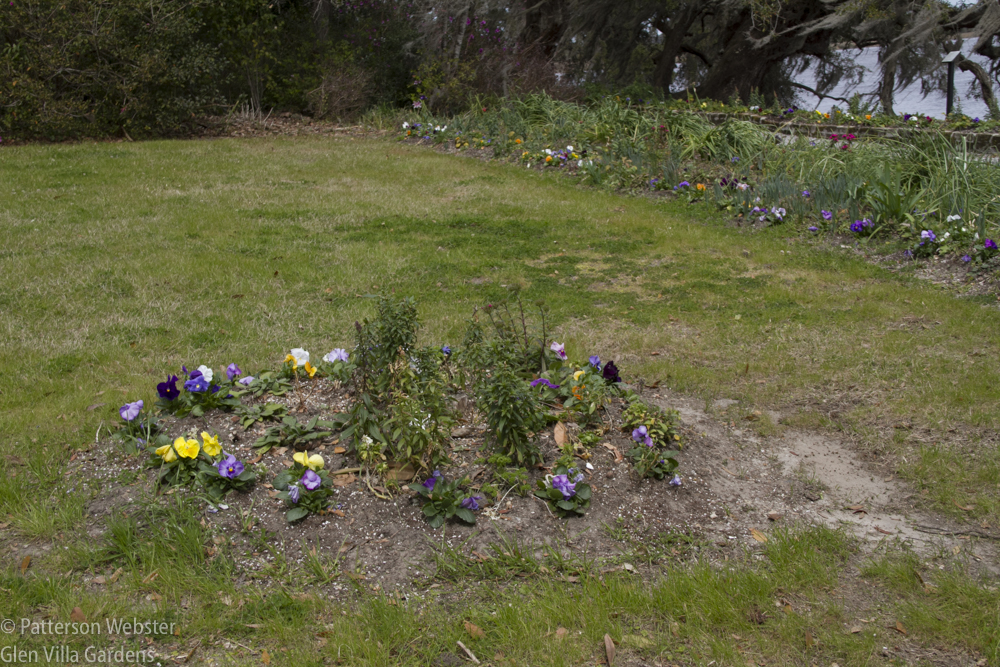
It’s hard to imagine a less creative planting than this little circle of bedraggled annuals. Why is it even there?
Don’t get me wrong. The spring flowers are lovely. Who can resist the close-up charm of a speckled azalea blossom …
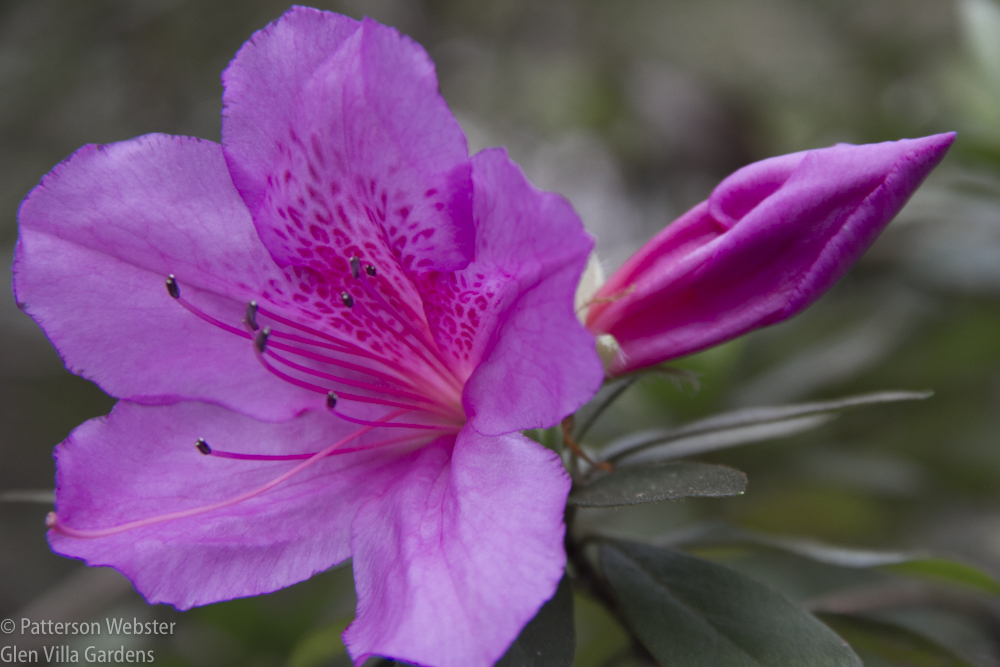
Magnolia Plantation has a large collection of azaleas, both native species and hybrids. Not all were in bloom when I visited.
or the silkiness of a pollen-dusted camellia …
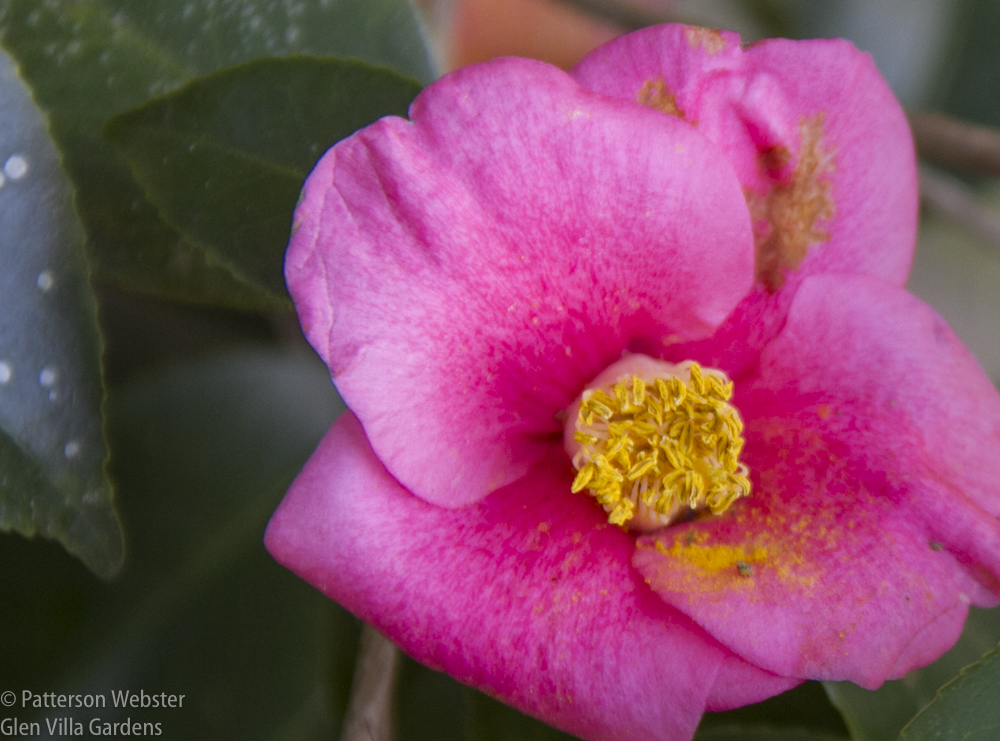
The Plantation’s collection of old camellias is one of the largest in the country.
or the two-toned magic of a magnolia opening in the warmth of the sun?
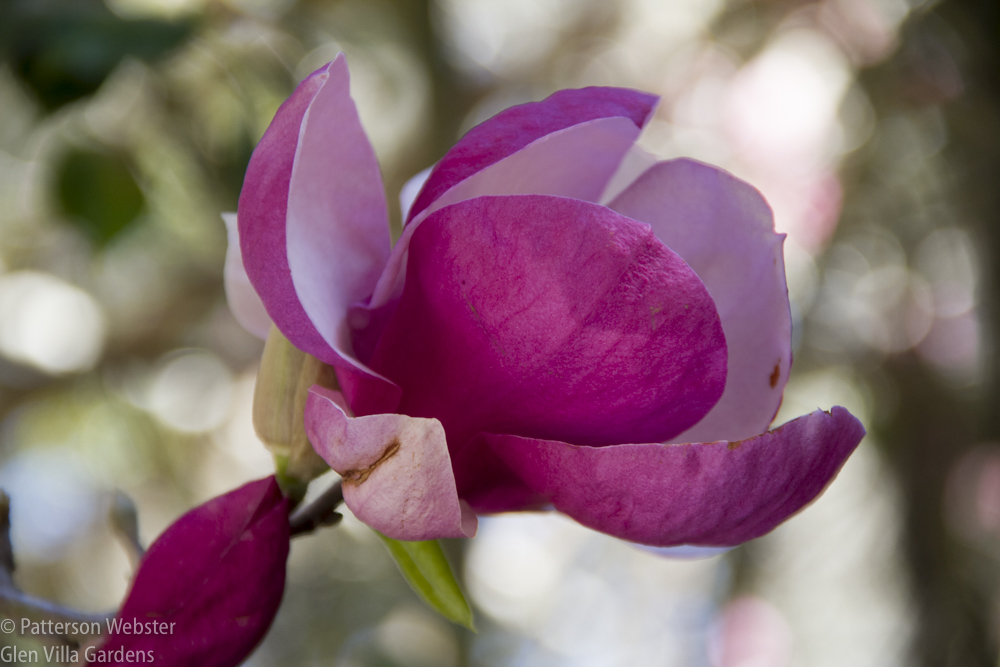
The magnolia trees were just beginning to come into bloom.
The camellias were particularly photogenic when I was there, whether they were pink…

Pretty in pink is a cliché for good reasons. This camellia has subtle candy cane stripes.
or scarlet …

Backlighting shows off the ruffled edge of this camellia.
or fire-engine red.
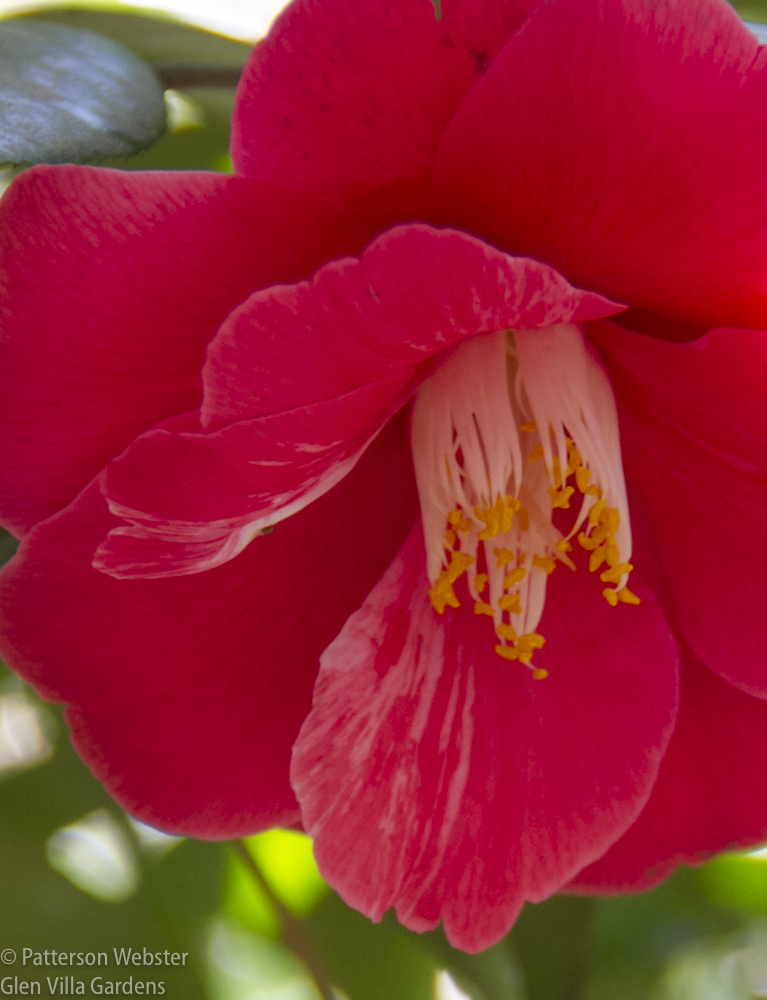
I was struck by the length of the pistols on this camellia.
And there’s no question. This garden is photogenic. Bridges reflected in dark water reinforce the promise of romance, whether the bridge is white…
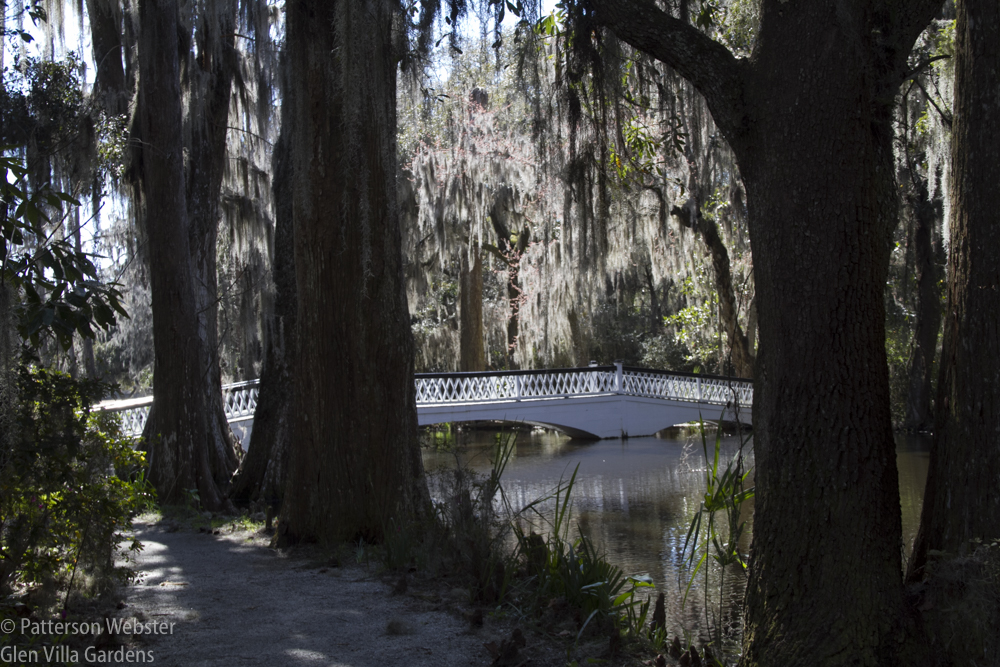
Seen through a curtain of Spanish moss, the bridge is undeniably appealing.
or red.
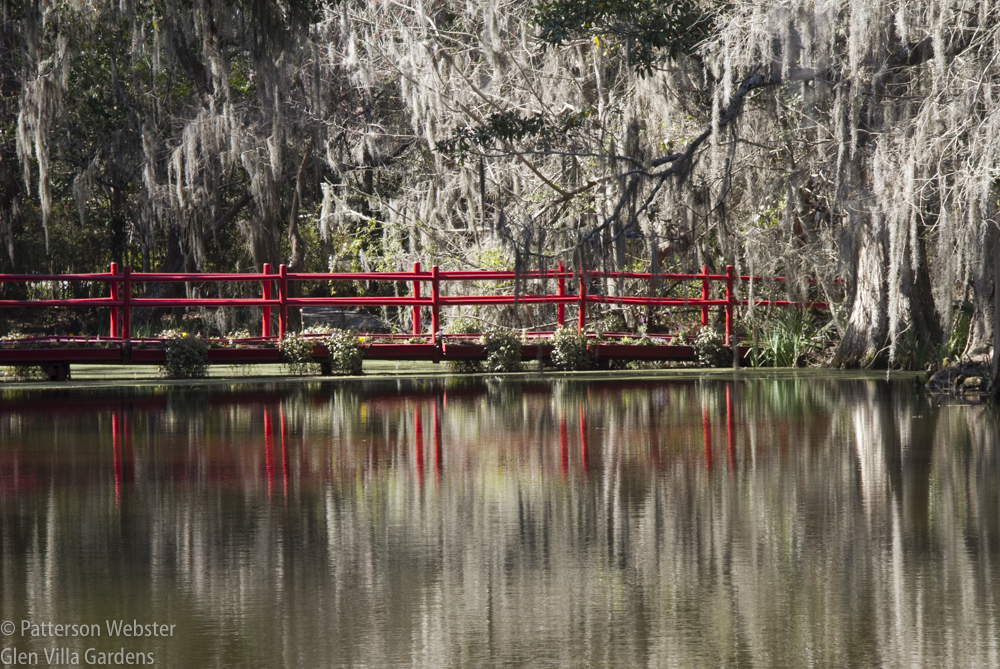
This small red bridge suggests a Chinese connection but there isn’t one.
Tree trunks reflected in the water create dramatic shapes and shadows …

The flared trunks and the fact that they are growing in water suggests that these are tupelo trees.
and wandering paths reveal unexpected spots of colour.
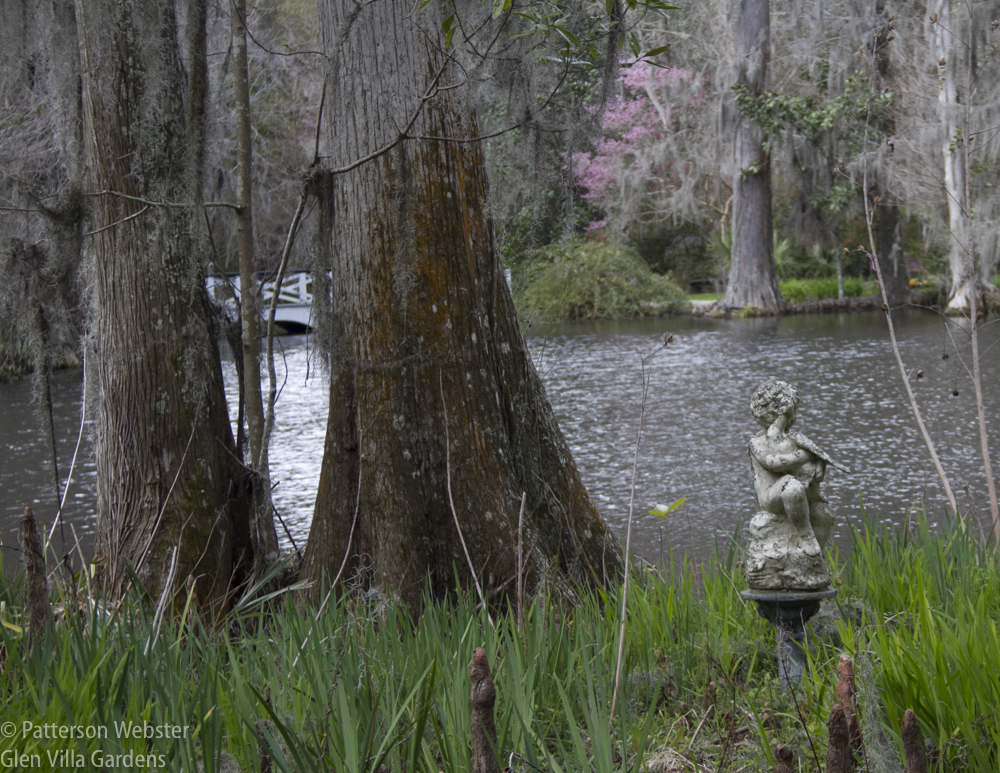
This statue with its classical allusions is one of many dotted around the garden.
And yet something is missing. Pretty blossoms are well and good — and I enjoy them as much as the next person — but I want something more, and Magnolia Plantation doesn’t deliver.
If it were only a pretty-picture garden, charmingly banal and sentimental. I could accept it for what it is. But underlying the sentimentality and superficial sweetness is an undercurrent of darkness.
The statuary that appears throughout the garden illustrates the point. As intended, it catches the eye and heightens the sense of romance that awaits at every turn. Hidden in the undergrowth or viewed through peepholes created in dense shrubs, it suggests a connection to the past, to other times and other places.
The connection it implies is to the glories of the classical world. Cupids, urns, Venus atop her scallop shell — all allude to a Golden Age, to better times when man was pure.
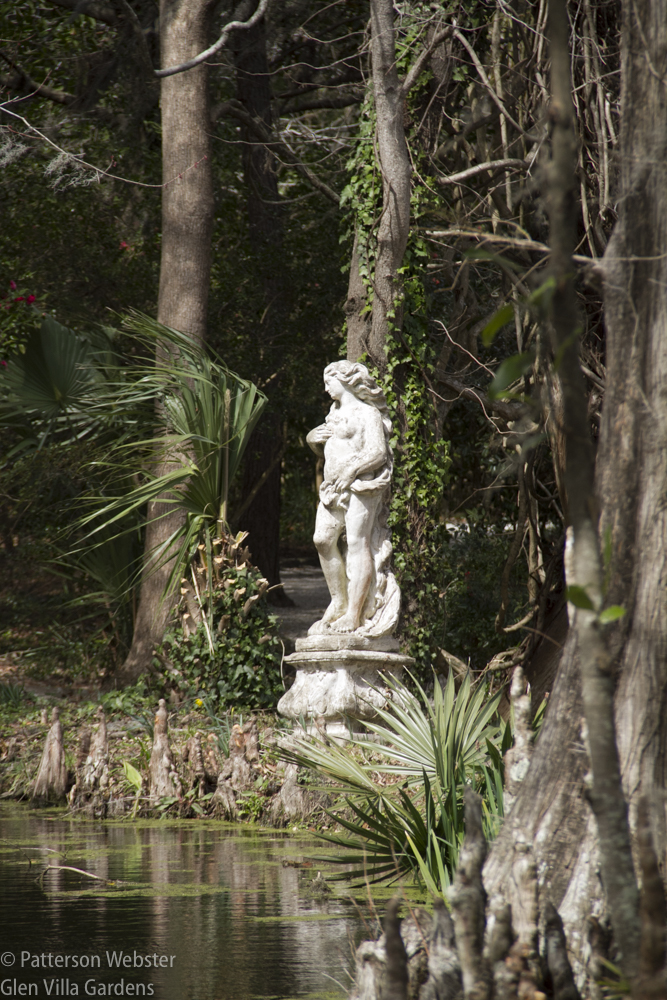
Modestly covering one breast, Venus is standing on a scallop shell in the pose that Botticelli chose for her in his Renaissance painting The Birth of Venus.
I think that is the problem. Magnolia Plantation alludes to the mythology of the Olde South. It presents a garden frozen in time, and that time wasn’t all sweetness and light.

This caption on this photo displayed in the garden reads “From this spot 150 years ago, this picture was taken of the wife and daughters of the Rev. John Drayton. While those who care for it come and go, over its 300 years of wars and hurricanes, the ever-changing garden of Magnolia Plantation seems never really to change — “
Adding to that are my reservations about any garden that is treated as a museum. A static garden is the very opposite of what a living, breathing garden is and must be.
A visit to Magnolia Plantation is a pleasant tourist experience but a garden that is praised as one that “seems never really to change” isn’t a garden that rewards multiple visits.







It all starts with the freighted name “Plantation,” don’t you think? What do you think the solution would be, Pat? It could be treated as a historical place, with acknowledgment of the slave labor that built it brought into the light through…what…explanatory signage? Or it could be rebranded with a name change and a new direction, like Chanticleer. Money is no doubt part of the problem behind the poor upkeep. But I wonder whether tourists (or locals) who visit places like these want the “Gone with the Wind” experience, and would be resistant to change? Lots of food for thought, Pat. Thanks for sharing your visit.
I agree, Pam. The name is an issue. Signs are posted throughout the garden that give information about the history of the place. Many of them give details of specific events. One about the rice fields mentions that the work was hard and unpleasant; another talks about how one of the owners educated slaves even though it was against the law to do this. The signage needs to be updated but a lack of money may not make this possible. Money is always an issue, in terms of maintenance and improvements of any sort but some maintenance practices could be improved, I think. The biggest issue is one you so rightfully raise — whether the people who visit Magnolia Plantation want anything different from what they are now getting. I suspect that the majority are happy to be seduced by the romance they see.
I’ve always thought, Pat, never actually having seen this garden, that I could appreciate it only for the atmosphere of Spanish moss, live oaks, cypresses in the water. So I think I agree with you. Particularly dislike the rather trite classical statuary. I think I’d much rather visit Middleton Place with the massive landscape features–the butterfly ponds.
The atmosphere is seductive, James, there’s no doubt. I visited Middleton Place last year and was bowled over by much of what I saw, particularly the butterfly ponds and the sculpted land. The live oaks leaning over the river are very impressive as well. Hard to resist, in fact.
Last March, during a meeting of the Garden Writers Association at Magnolia Plantation, I met the Director, Tom Johnson, plus some of the gardeners who descend from families who worked as slaves. They are devoted to the garden and honored to be a part of both its past and future. The Plantation is toured almost daily in spring by school groups who learn about slavery, rice plantations, and the history (good and bad) of the region so our society can grow from the past, not just condemn those who lived in less enlightened times. The garden was built for the love of a husband for his wife and (if my memory is correct) it is the last surviving Romantic Landscape style garden in the US, gardens that were made to help people see beyond everyday life and dream with full hearts.
I’m glad to learn that school children visit Magnolia Plantation, Marian. I visited the gardens only and didn’t tour the house or the slave cabins. If I had, perhaps my ambivalence about the place would be different. I think up-dated signage would help. And maybe I’m simply not a romantic!
What a lovely and ephemeral place. I can just imagine mysterious happenings there on a hot, dark summer night. So sad when gardens with such promise as this are in a state of disarray from lack of care or funding.
I can easily imagine mysterious happenings going on there, too. Money is always an issue. I think that is problem much more than a lack of care.
I’m so mad we didn’t see this. Actually, I didn’t even know it was there. If we ever go back it’s on the top of the list.
It’s definitely worth a visit, Jason. So is Middleton Place, just down the road from Magnolia. There’s a family connection between the two but they are very different in style. Middleton is earlier and more French in style, with sculpted land that leads down to two small lakes shaped like butterfly wings. Quite magical.
The Spanish moss, camellias and especially the magnolias would be enough for me to absorb the decades of romance and glory days of the old south! One of those visual feelings where you would have to feel the grandeur of long ago!
Glory days… it depends on where you stand. Undoubtedly the Spanish moss hanging from live oaks, the camellias and magnolias are seductive.